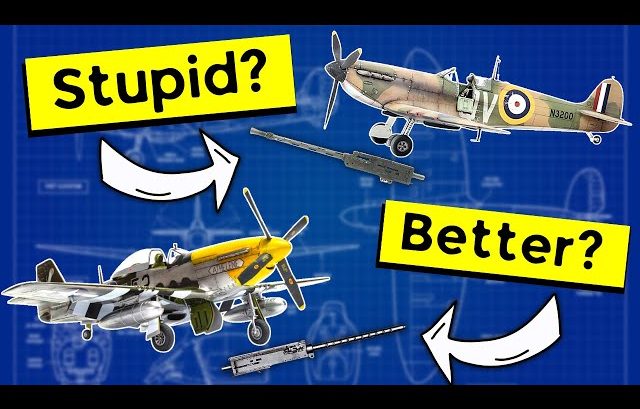Why did the British persist with arming their aircraft with 0.303 machine guns for much of the Second World War?
Arguments usually boil out to the following- British officials were incompetent, it was cheaper to use a surplus of World War I ammunition, and the .303 was just the best gun available to the Brits at that time.
Which of these is actually true? Well, the answer is much more surprising than we initially thought.
Why the.303 Was Chosen by Britain
During the First World War, British aircraft has been equipped largely with either the Vickers machine gun or the American-designed Lewis machine gun. Now, these were both armed with 0.303 caliber rounds. They also adapted models of the same guns used by the infantry.
Against enemy aircraft of the day, they were highly effective.
Testing New Types of Armament
Could a .303 still damage an aircraft? While testing showed that the 50 cal created a bigger hole than the 0.303, when both of them were compared in terms of weight, the future Browning 0.303 emerged as the victor.
Moreover, when comparing the .303 caliber round to the 20 mm, there was no contest. The bigger and heavier explosive shell could inflict much more damage than the rifle caliber round. However, it was deemed that no suitable 20 mm gun was available that could match the 0.303 machine gun for reliability and rate of fire.
Why Didn’t the RAF Use .50 Caliber Machine Guns?
In 1939, there have been plans to standardize armament efforts among the British and French and use the Belgium FN version of the .50 caliber machine gun.
However, these plans didn’t push through when Belgium was invaded in 1940. Also, it seemed better to ramp up efforts in building .303 guns instead. Supply was also another reason why the .303 was favored over the Browning .50 caliber.
Why Didn’t the RAF Switch to 20 mm Guns?
The British simply didn’t have the industrial capability in 1940 to equip all their fighters and bomber aircraft with a .50 cal armament let alone a 20 mm Hispana Cannon.
Furthermore, the knowledge that a 20 mm shell was more destructed was overshadowed by the difficulty of the gun to work reliably.
The Real Reason?
Could the British have simply held on to the .303s because of the effect it had on Axis aircraft? Seeing that little could stop a 20 mm shell, there would be little point in trying to protect a crew or fuel tank from it.
However, when aircraft carry armaments like the .303 caliber machine guns which are more easily protected against, it would be foolish not to install the armor plate.
While this theory might look a little bit far-fetched, this is what Japanese aircraft designers did during the run-up to war, and what some Finnish units reportedly did during the war. Where are the Brits really that canny? What do you think? Let us know your thoughts!



